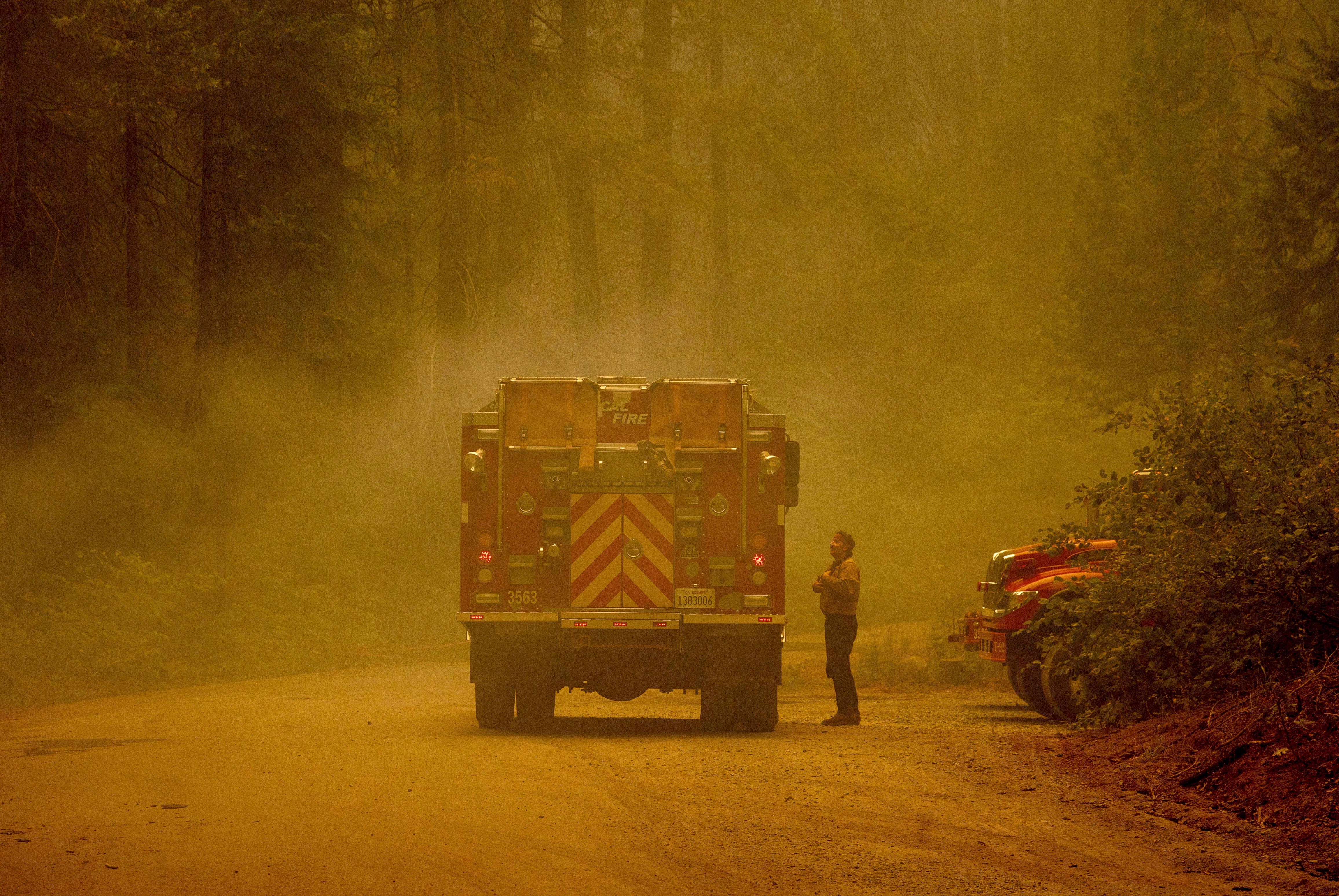National forests closed as California wildfires surge
Millions of acres of national forest in Northern California are being closed because of dangerous fire conditions that already have sent a score of blazes raging through the area and destroyed hundreds of homes

Your support helps us to tell the story
From reproductive rights to climate change to Big Tech, The Independent is on the ground when the story is developing. Whether it's investigating the financials of Elon Musk's pro-Trump PAC or producing our latest documentary, 'The A Word', which shines a light on the American women fighting for reproductive rights, we know how important it is to parse out the facts from the messaging.
At such a critical moment in US history, we need reporters on the ground. Your donation allows us to keep sending journalists to speak to both sides of the story.
The Independent is trusted by Americans across the entire political spectrum. And unlike many other quality news outlets, we choose not to lock Americans out of our reporting and analysis with paywalls. We believe quality journalism should be available to everyone, paid for by those who can afford it.
Your support makes all the difference.Millions of acres of national forest in Northern California are being closed because of dangerous fire conditions that already have sent a score of blazes raging through the area and destroyed hundreds of homes.
The U.S. Forest Service announced Thursday that beginning on Aug. 22 it will close nine national forests from near Lake Tahoe at the Nevada border on the east all the way west to Six Rivers National Forest, which stretches north to the Oregon border and contains more than 1 million acres of land alone.
The Eldorado National Forest already had been closed because of the Caldor Fire, which gutted the Sierra Nevada town of Grizzly Flats this week. The uncontained blaze had destroyed well over 100 square miles (259 square kilometers) of land.
After growing to 10 times its original size in just two days, the fire's progress slowed a bit on Thursday and it was pushing east into less-populated forest areas. However, some 25,000 people remained under evacuation orders.
Fire managers rushed resources to the fire growing on steep slopes in a forested region southwest of Lake Tahoe. More than 650 firefighters and 13 helicopters were assigned to the blaze, and air tankers from throughout the state were flying fire suppression missions there as conditions allowed, authorities said.
“The hope is with the additional resources and personnel on scene, we can really start to build that box around this fire and start the containment,” said Keith Wade of the California Department of Forestry and Fire Protection.
In Omo Ranch, close to where the fire started, a bulldozer ripped out trees to build a fire line and stop the blaze from spreading south.
While nearly the entire town evacuated, Thurman Conroy and his wife, Michele, stayed behind to protect their house and their business, Conroy General Store. But they were prepared to flee if the fire got too close.
“The fire wants us bad because it’s made every attempt it can to get out of that canyon and up this way,” Thurman said. “So they keep beating it down. And it’s just ... it’s resilient, it’s stubborn, it won’t go away. That’s all we can do.”
Evacuees from the Caldor Fire found refuge in places like the Green Valley Community Church in Placerville, west of the fire, where they set up tents and trailers in a parking lot. Adrian Childress, 7, painted pictures to pass the time and a special tent was set up for people who wished to pray.
Gusty weather has pushed a series of disastrous blazes through California trees, grass and brush. A dozen fires threatened thousands of homes and the hottest have forced evacuations of entire small communities tucked into scenic forest areas.
More than 10,000 firefighters were on the lines.
The Dixie Fire, burning since July 13 in the northern Sierra Nevada and southern Cascades, ballooned further to about 1,060 square miles (2,745 square kilometers) and was only 35% contained, authorities said.
It is the first fire in recorded state history to stretch east and west all the way across the Sierra Nevada range, authorities said.
The fire, which gutted the town of Greenville two weeks ago, has destroyed more than 1,200 buildings including 649 homes, according to ongoing damage assessments.
There have been a handful of injuries but no deaths but it was only three years ago that a fire not too far southwest of a current blaze killed 85 people and virtually razed the town of Paradise in Butte County.
One small but destructive blaze burned through a mobile home park and reduced an estimated 50 homes to ashes in Lake County, about 80 miles (130 kilometers) north of San Francisco.
Climate change has made the West warmer and drier in the past 30 years and will continue to make the weather more extreme and wildfires more destructive, according to scientists.
The vegetation has been turned to tinder by hot, dry weather and an ongoing drought that also has scorched much of the Western United States, fire officials said.
More than 100 large, active fires were burning in more than a dozen Western states, according to the National Interagency Fire Center in Boise, Idaho. Those fires were straining resources and that has made it harder for California to obtain equipment and crews from out of state.
The U.S. Forest Service has approached Canada, Mexico and Australia for assistance, although they already are busy battling Canadian blazes, agency spokesman Jonathan Groveman said.
___
Antczak reported from Los Angeles.